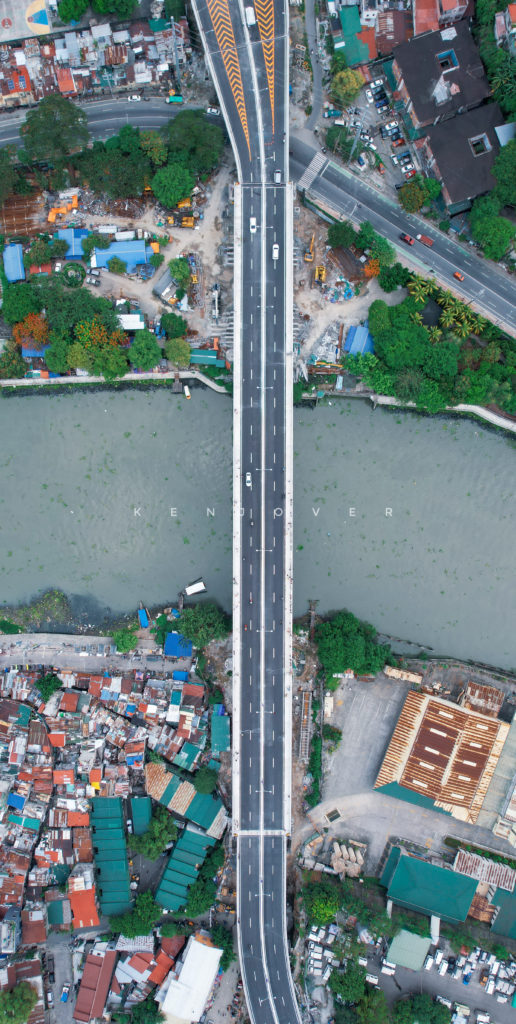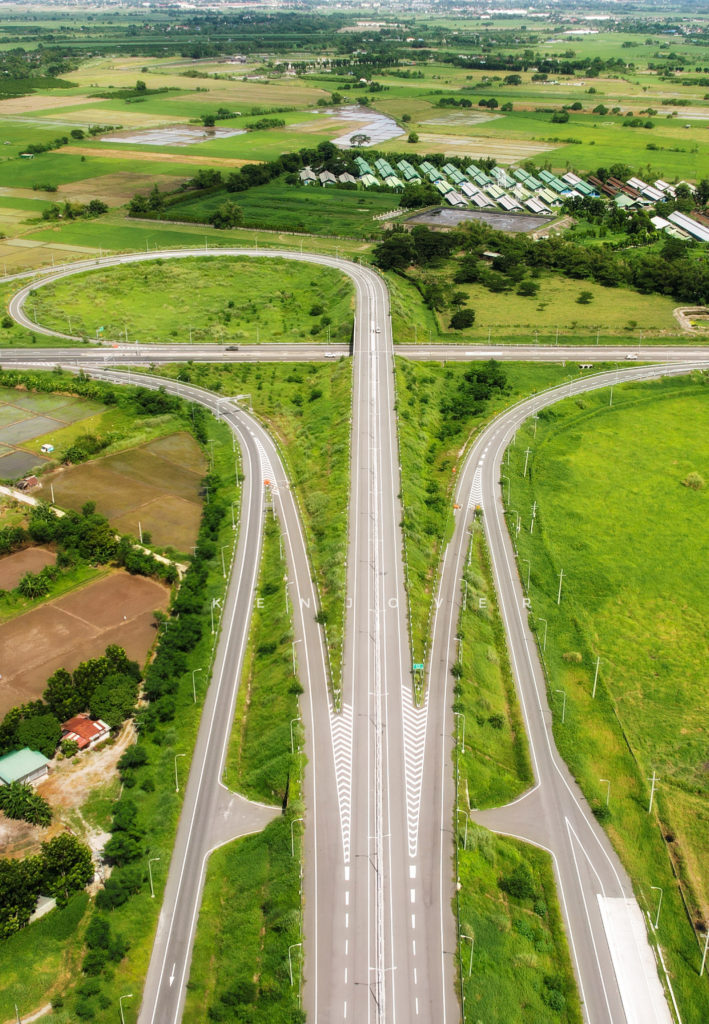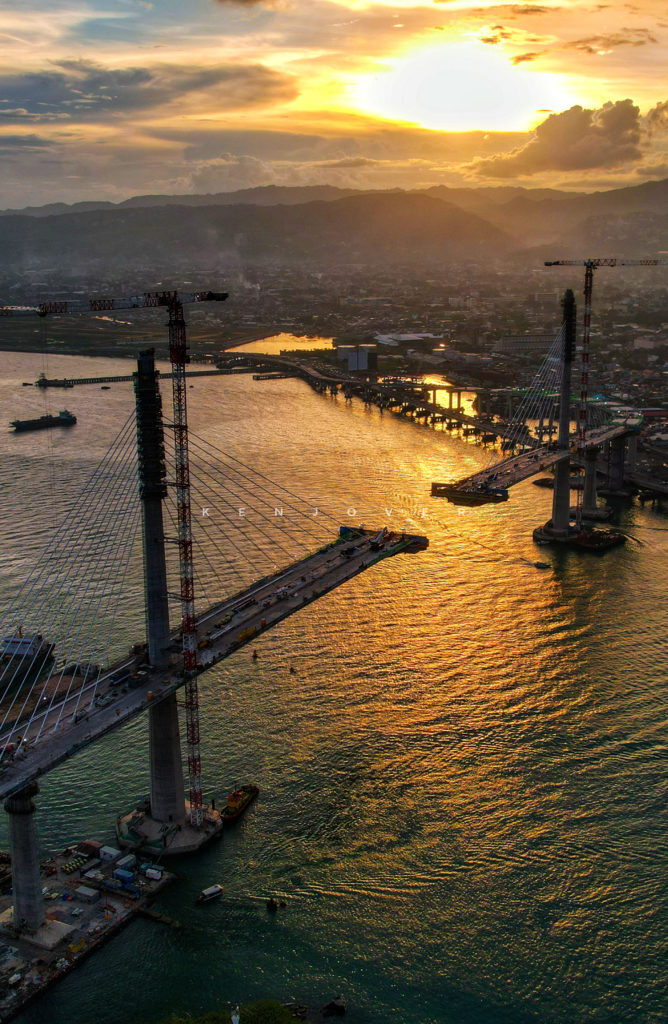What has ‘Build, Build, Build’ achieved so far?
By Anna Mae Lamentillo | Manila Bulletin | July 21, 2021 12:03 AM
29,264 kilometers of roads, 5,950 bridges, 214 airport and 451 seaport projects
I began writing this piece on “Build, Build, Build” while on my way back to Manila from Tarlac after inaugurating the first 18-kilometer segment of Central Luzon Link Freeway with President Rodrigo Duterte, Department of Public Works and Highways Secretary Mark Villar, Senator Bong Go and Tarlac Governor Susan Yap.
The Central Luzon Link Freeway, which connects Tarlac and Nueva Ecija within 20 minutes, is part of the Luzon Spine Expressway Network, a masterplan aimed at reducing travel time from the northernmost part of Luzon, Ilocos, to the southern most part, Bicol, by over 50 percent via the construction of a 101-kilometer high standard highway network.
The event ended at about 8 o clock in the evening and we reached home a little before midnight. The following day, the call time was 5 a.m. Secretary Mark and I were going to Cebu to attend the inauguration of the 129-kilometer Metro Cebu bike lane network and inspect the Philippines’ longest bridgeway — the 8.5-kilometer Cebu-Cordova Link Bridge.

BGC ORTIGAS Link Bridge is one of 5,950 bridges completed since the start of the Duterte administration. (Credit: Manila Bulletin)
This was our normal routine for the past five years. While it was not easy to sustain — we wanted to leave office knowing we gave it everything that we got. To us, “Build, Build, Build” is an opportunity to leave the Philippines at a much better state than before. It was a chance to catapult our tiger cub economy to a trillion dollar club. Fate allowed us to venture on a gigantic task of making the lives of Filipino people in 81 provinces more comfortable.
The President’s instructions were clear from the onset: Finish as many “Build, Build, Build” projects as possible in the soonest possible time. Whoever gets the credit is none of our business.
Five years after since President Rodrigo Duterte assumed position, DPWH, under Secretary Villar, has completed a total of 29,264 kilometers of roads, 5,950 bridges, 11,340 flood control projects, 222 evacuation centers, 89 Tatag ng Imprastraktura Para sa Kapayapaan at Seguridad (TIKAS) projects and 150,149 classrooms, and 653 COVID-19 facilities has also been built under the “Build, Build, Build” program.
Moreover, the Department of Transportation (DOTr), under Secretary Art Tugade, have completed 214 airport projects, 451 commercial and social/tourism seaport projects and the country’s first land port — the Paranaque Integrated Terminal Exchange (PITX).
29,264 kilometers of roads completed

THE CENTRAL Luzon Link Freeway is part of the Luzon Spine Expressway Masterplan which aims to increase the high standard highway network in Luzon by three-fold. (Credit: Manila Bulletin)
Of the 29,264 kilometers of roads completed, 2,025 kilometers are farm-to-market roads, 94.99 kilometers are farm-to-mill roads, 1376.26 kilometers are missing links, 1,470.51 kilometers are bypasses or diversion roads, 149.65 kilometers lead to airports, 293.19 kilometers lead to seaports, 703.54 kilometers lead to economic zones and 2,436.40 kilometers lead to declared tourism destinations. A total of 3,122.73 kilometers were maintained, 4,686 kilometers widened and 3,591.96 kilometers rehabilitated and upgraded.
These includes the NLEX Harbor Link Segment 10, the Cavite-Laguna Expressway, the Tarlac-Pangasinan-La Union Expressway, the Laguna Lake Highway, the Candon City Bypass Road in Ilocos Sur, the Slaughter House Road in Davao City, the Pulilan-Baliuag Diversion Road in Bulacan, the Calapan-Roxas Road in Oriental Mindoro, the Mandaue Causeway Road in Cebu, the Dipolog-Oroquieta Road in Misamis Occidental, the Dumaguete North Road in Negros Oriental, and the Taytay-El Nido Road in Palawan.
5,950 bridges completed

THE CEBU-Cordova Link bridge is part of the Mega Bridge Masterplan, which aims to connect Luzon, Visayas, and Mindanao via land travel. (Credit: Manila Bulletin)
Of the 5,950 bridges, 1,366 were widened, 355 constructed, 1,805 bridges retrofitted, 1,389 rehabilitated and 297 replaced. About 738 local bridges were also built.
These include the Lucban Bridge in Cagayan, the Marcos Bridge in Marikina, the Sicapo Bridge in Ilocos Norte, the Pigalo Bridge in Isabela, the Anduyan Bridge in La Union, the Tallang Bridge along Cagayan, the Bolo-Bolo Bridge in Misamis Oriental, the Caguray Bridge in Occidental Mindoro, the Tinongdan Bridge, the Pasac-Culcul in Pampanga, the Aganan Bridge in Iloilo, the Maddiangat Bridge in Nueva Viscaya and the Pigalo Bridge in Isabela.
11,340 flood control projects
A total of 11,340 flood mitigation structures were completed since June 2016 to expand protected flood-prone areas across the country.
These include the Mandaluyong Main Drainage Project, the pumping stations at Barangays Wawang Polo and Coloong, the Flood Risk Management Project for Cagayan River, the Flood Risk Management Project for Tagoloan River, the Leyte Tide Embankment Project and the Pasig Marikina River Flood Control Project.
150,149 classrooms
To address the gap in physical facilities required for elementary and secondary schools nationwide, Villar noted that a total of 150,149 classrooms were constructed. Another 17,647 classrooms are in various stages of implementation.
These include the National High School in Alaminos, Pangasinan, the Alejandra Navarro National High School in Davao City and the Bagong Pag-Asa Elementary School.
214 airports completed
In the aviation and airports sector, the DOTr and its attached agencies have completed 214 airport projects under the Duterte administration, with 100 more ongoing.
Completed projects include the Bohol-Panglao International Airport, the Mactan-Cebu International Airport, the Sangley Airport in Cavite, the Lal-Lo International Airport, the Tacloban Airport, the Puerto Princesa International Airport and the Ormoc Airport.
Domestic airports also underwent improvements. These include the gateways in Camiguin, Virac, and Tuguegarao.
Meanwhile, ongoing airport projects include the Bicol International Airport which was delayed for 11 years and is now more than halfway complete; the second passenger terminal building of the Clark International Airport; the Davao International Airport; Bukidnon Airport; Surigao Airport; and Kalibo Airport.
451 commercial and social seaports
Across the archipelago, seaports are being upgraded and rehabilitated to better serve the public. Currently, the DOTr has completed 451 commercial and social/tourism seaport projects, while 101 are ongoing.
Notable port projects include the construction of the country’s biggest Passenger Terminal Building at the Port of Cagayan de Oro, and the rehabilitation of Opol Port in Misamis Oriental, Sasa Port in Davao, Butuan Port in Agusan Del Norte, Tubigon Port in Bohol, Limasawa Port in Southern Leyte, and General Santos (Makar Wharf).
The country’s first barge terminal, the Cavite Gateway Terminal, which aims to reduce truck traffic on major roads and offer a cost-effective access to goods between Manila and Cavite through the waterways, had been built.
On maritime safety, as of June 2021, we now have 564 out of 600 lighthouses operational nationwide.
Railways
For railways, DOTR has six projects with ongoing construction and one undergoing rehabilitation.
In 2019, after 40 years and six administrations, the Metro Manila Subway, our country’s first underground railway system, finally started with site-clearing works at the Valenzuela Depot. Two out of the 25 massive tunnel boring machines are already in the Philippines for the start of the underground works within 2021. This will reduce travel time between Quezon City and NAIA from one hour and 10 minutes to just 35 minutes.
The much-delayed MRT-7, whose Concession Agreement was signed in 2008 but had nearly zero movement until 2016, is now 60.93 percent complete. This will reduce travel time between Quezon City and Bulacan from 2-3 hours to just 35 minutes.
Approved by the NEDA Board in 2007 and stalled since 2009, the Common Station is now undergoing 24/7 construction, and is now 50.95 percent complete. The Common station, which will connect MRT-3, MRT-7, LRT-1, and the Metro Manila Subway, will have the capacity to accommodate 500,000 passengers per day.
The LRT-1 Cavite Extension, delayed for 19 years, finally started full-blast construction this year. This will reduce travel time between Baclaran and Bacoor from one hour 10 minutes down to 25 minutes.
The LRT-2 East Extension project is now completed and open to the public. The LRT-2 East Extension reduces travel time between Manila and Antipolo from two to three hours to just 40 minutes.
The MRT-3, battered from years of poor and erratic maintenance, is now undergoing comprehensive rehabilitation with Sumitomo-Mitsubishi Heavy Industries of Japan.
The Manila to Clark Railway, planned way back in 1993, is now undergoing full-blast construction with PNR Clark Phase 1’s first train set scheduled for delivery within the fourth quarter of 2021. This will reduce travel time between Tutuban and Malolos from one hour and 30 minutes to just 35 minutes.
PNR Clark Phase 2, PNR Calamba, PNR Bicol, Subic-Clark Railway, and the Mindanao Railway are all in the pipeline, and are now undergoing various stages of procurement and pre-construction work.
Source: Manila Bulletin
